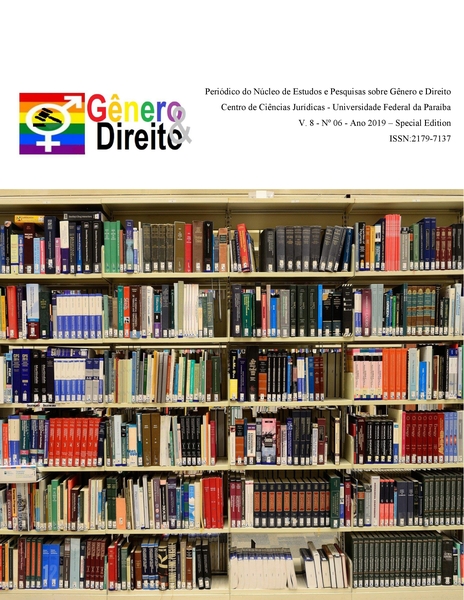FACTORS CONTRIBUTING TO DYSPHEMISTIC EFFECT TYPES OF DYSPHEMISM
DOI:
https://doi.org/10.22478/ufpb.2179-7137.2019v8n6.49387Palavras-chave:
dysphemism, classification, pragmatic factors, semantics, stylistics.Resumo
This paper examines ways to divide dysphemisms into groups. It argues that there is need to take into account several factors common for communicative situations in which dysphemisms are used. Research shows that they are the speaker, the referent, the intention of the speaker, language resources. According to language recourses used to achieve dysphemistic effect words and phrases are divided into those that have contextual or dictionary dysphemistic meaning. They fall into two groups according to animate or inanimate referent. Two other factors are pragmatic. They influence the use of dysphemism in different groups determining their characteristics in a particular communicative situation.Downloads
Não há dados estatísticos.
Referências
Enright, D. J., 1985. Fair of Speech: The Uses of Euphemism. Oxford: Oxford University Press.
Warren, B., 1992. What Euphemisms Tell us about the Interpretation of Words. Studia Linguistica, 46 (2): 128-172.
McEnery, T., 2006. Swearing in English. Bad Language, Purity and Power from 1586 to the Present. Abingdon: Routledge.
Hughes, G. An Encyclopedia of Swearing: The Social History of Oaths, Profanity, Foul Langauge, and Ethnic Slurs in the English-Speaking World. Armonk: M. E. Sharpe
.
Sidelnikova, E. A. and S. V. Serebryakova, 2017. Kommunikativno-pragmaticheskaya i perevodcheskaya spetsifika evfemizatsii i disfemizatsii v gazetno-publitsisticheskom ekonomicheskom diskurse. Stavropol: SKFU. URL: https://rucont.ru/efd/622880.
Mosievich, L., 2009. Disfemizmy i yazykovaya kartina mira. Naukovi zapysky, 81(3): 358-362. URL: http://nbuv.gov.ua/UJRN/Nzs_2009_81%283% 29__88
Rezanova, A. N., 2008. Disfemiya v angliiskom yazyke: semanticheskiye mehanizmy i pragmaticheskiye funktsii. Sankt-Peterburg.
Michel, J-B. et al., 2011. Quantitative Analysis of Culture Using Millions of Digitized Books. Science, 331(6014): 176-182.
Allan, K. and K. Burridge, 2006. Forbidden Words: Taboo and the Censoring of Language. Cambridge: Cambridge University Press.
Warren, B., 1992. What Euphemisms Tell us about the Interpretation of Words. Studia Linguistica, 46 (2): 128-172.
McEnery, T., 2006. Swearing in English. Bad Language, Purity and Power from 1586 to the Present. Abingdon: Routledge.
Hughes, G. An Encyclopedia of Swearing: The Social History of Oaths, Profanity, Foul Langauge, and Ethnic Slurs in the English-Speaking World. Armonk: M. E. Sharpe
.
Sidelnikova, E. A. and S. V. Serebryakova, 2017. Kommunikativno-pragmaticheskaya i perevodcheskaya spetsifika evfemizatsii i disfemizatsii v gazetno-publitsisticheskom ekonomicheskom diskurse. Stavropol: SKFU. URL: https://rucont.ru/efd/622880.
Mosievich, L., 2009. Disfemizmy i yazykovaya kartina mira. Naukovi zapysky, 81(3): 358-362. URL: http://nbuv.gov.ua/UJRN/Nzs_2009_81%283% 29__88
Rezanova, A. N., 2008. Disfemiya v angliiskom yazyke: semanticheskiye mehanizmy i pragmaticheskiye funktsii. Sankt-Peterburg.
Michel, J-B. et al., 2011. Quantitative Analysis of Culture Using Millions of Digitized Books. Science, 331(6014): 176-182.
Allan, K. and K. Burridge, 2006. Forbidden Words: Taboo and the Censoring of Language. Cambridge: Cambridge University Press.
Downloads
Publicado
2019-11-27
Como Citar
NIKOLAEVNA PROKHOROVA, O. .; VLADIMIROVICH CHEKULAI, I. .; VLADIMIROVNA PUPYNINA, E. .; FEODOROVNA BEKH, E. . FACTORS CONTRIBUTING TO DYSPHEMISTIC EFFECT TYPES OF DYSPHEMISM. Gênero & Direito, [S. l.], v. 8, n. 6, 2019. DOI: 10.22478/ufpb.2179-7137.2019v8n6.49387. Disponível em: https://periodicos.ufpb.br/index.php/ged/article/view/49387. Acesso em: 4 abr. 2025.
Edição
Seção
Seção Livre

